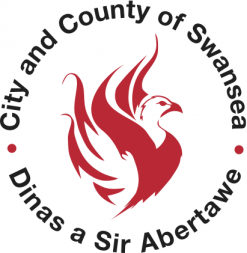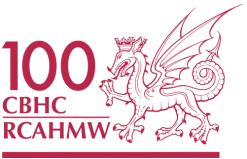Partners
This project is being undertaken by individuals representing five major academic and heritage organisations in Wales.
Swansea University
 Swansea University is the home of the Copper Project and where most of the work will be undertaken. The University’s own connections with the Welsh copper industry in themselves make it a worthy base for this project. Singleton Abbey, the founding building of the University, was the centre of the family estate of the Vivians, Cornish copper magnates who moved to South Wales.
Swansea University is the home of the Copper Project and where most of the work will be undertaken. The University’s own connections with the Welsh copper industry in themselves make it a worthy base for this project. Singleton Abbey, the founding building of the University, was the centre of the family estate of the Vivians, Cornish copper magnates who moved to South Wales.
History & Classics in the College of Arts and Humanities
Prof. Huw Bowen leads the project as Principal Investigator and was the main architect of the ESRC bid. Prof Bowen is a modern economic historian whose interests lie in the connectivity between Britain and South Asia, particularly that evidenced by the activities of the East India Company, which culminated in his book, The Business of Empire: The East India Company and Imperial Britain, 1756-1833 (Cambridge University Press, 2006). Uncovering the importance of copper in the company’s portfolio of commodities, he became interested in exploring the impact the Welsh copper had on British trade abroad.
Dr. Louise Miskell is an historian of nineteenth-century British urban history, and her work has focused on social and cultural developments in Welsh industrial towns. She has also published on the copper industry’s relationships with other heavy industries such as in iron and coal and has most recently completed a study on the earliest smelting works in Swansea, resulting in a scholarly edition of Robert Morris’ The History of the Copper Concern, a description of the smelting from the 1770s: The Origins of an Industrial Region: Robert Morris and the First Swansea Copper Works, c.1727-1730 (South Wales Record Society, 2010).
Dr. Tehmina Goskar is Research Officer for the Copper Project. She is an historian of material culture with expertise in the history of metalworking. She also has professional interests in industrial heritage, particularly its cultural and social dimensions and has worked on the interpretation of several sites and collections in the past. She will be working with the National Waterfront Museum to curate the forthcoming exhibition as well as managing the digitisation of collections relating to the copper industry.
Library & Information Services and the Richard Burton Archives.
Swansea University houses a wealth of collections relating to Welsh industrial history, including those relating to the copper industries of the Swansea area. These collections are of international significance and are housed in a brand new purpose-built facility in the Library and Information Centre, called the Richard Burton Archives. The copper archives are found in the Grenfell Collection; Hugh Vivian Collection; Morris Papers; Stick and Bellingham Collection; White Rock Works Collection; and the Yorkshire Imperial Metals Collection, in addition to a range of records in other collections. The University Archives also holds a number of records relating to the Lower Swansea Valley Project. This project will conduct a major survey of the collections, selecting material for future digitisation and use for learning and continuing professional development resources.
National Waterfront Museum

The National Waterfront Museum in Swansea is one of the seven national museums which make up Amgueddfa Cymru (National Museum Wales). The museum is dedicated to telling the history of Wales’ industry and innovation and already has permanent displays relating to copper in its galleries. It is home to international experts in modern and heavy industries, including its maritime aspects. The museum is host to the project's major exhibition Byd Copr Cymru-A World of Welsh Copper from July to October 2011 and will manage the follow-on travelling exhibition. It is also a contributor to the copper exhibition guides made available on this site.
City and County of Swansea
 The City and County of Swansea covers an area of 146 square miles, and in 2007 had a population of 228,100, representing almost 8% of the total population of Wales. The Council is responsible for a number of the physical remains of the copperworks sites along the Tawe Valley corridor. The communities that come under the authority are intended to be major beneficiaries of this project because its results will be used to inform the development of its Heritage Interpretation Strategy and promote the aims and objectives behind the regeneration schemes of the Tawe Riverside Corridor (Lower Swansea Valley). Richard Porch, Regeneration Projects Officer, has written A Short History of the Hafod Copperworks (1810-1924) which outlines some of the ways in which the area’s heritage can inform its future regeneration. In January 2011 the Council signed a memorandum of understanding to look at a heritage-led regeneration of the Hafod and Morfa copperworks sites.
The City and County of Swansea covers an area of 146 square miles, and in 2007 had a population of 228,100, representing almost 8% of the total population of Wales. The Council is responsible for a number of the physical remains of the copperworks sites along the Tawe Valley corridor. The communities that come under the authority are intended to be major beneficiaries of this project because its results will be used to inform the development of its Heritage Interpretation Strategy and promote the aims and objectives behind the regeneration schemes of the Tawe Riverside Corridor (Lower Swansea Valley). Richard Porch, Regeneration Projects Officer, has written A Short History of the Hafod Copperworks (1810-1924) which outlines some of the ways in which the area’s heritage can inform its future regeneration. In January 2011 the Council signed a memorandum of understanding to look at a heritage-led regeneration of the Hafod and Morfa copperworks sites.
In addition the Council runs West Glamorgan Archive Service, Swansea Museum and the Glynn Vivian Art Gallery all of whom are making contributions to the project and sitting on the Advisory Group.
University of Glamorgan
 The University of Glamorgan's representative on the Copper Project is Prof. Chris Evans, a modern historian who works on the global connections between Britain, Europe and the Atlantic world in the 17th to 19th centuries. He has particular research interests in the manufacture and consumption of metal in these regions, including that of Welsh copper which had such a profound impact on slave labour in the copper mines of South America, particularly Cuba. He has recently published a major study on the Welsh involvement in international slavery, Slave Wales: The Welsh and Atlantic Slavery, 1660 – 1850 (University of Wales Press, 2010). He is also working on a project to examine the impact of Welsh copper on transatlantic telegraphy.
The University of Glamorgan's representative on the Copper Project is Prof. Chris Evans, a modern historian who works on the global connections between Britain, Europe and the Atlantic world in the 17th to 19th centuries. He has particular research interests in the manufacture and consumption of metal in these regions, including that of Welsh copper which had such a profound impact on slave labour in the copper mines of South America, particularly Cuba. He has recently published a major study on the Welsh involvement in international slavery, Slave Wales: The Welsh and Atlantic Slavery, 1660 – 1850 (University of Wales Press, 2010). He is also working on a project to examine the impact of Welsh copper on transatlantic telegraphy.
Royal Commission on the Ancient and Historical Monuments of Wales
 RCAHMW plays a leading national role in developing and promoting the understanding of the archaeological, built and maritime heritage of Wales. The Commission has undertaken in-depth surveys to locate, record and assess the significance of the remains of the thirteen main copper smelting works in south-west Wales. Head of Survey and Investigation, Stephen Hughes, has written the classic study of industry in the Swansea area, entitled Copperopolis: Landscapes of the Early Industrial Period in Swansea (RCAHMW, 1988). Hundreds of new records relating to the archeology and sites of Welsh copper have been made available on the online National Monuments Record of Wales, Coflein, for this project. RCAHMW will also be overseeing the computer-generated 3D visualisations and animations of the historic Hafod copperworks.
RCAHMW plays a leading national role in developing and promoting the understanding of the archaeological, built and maritime heritage of Wales. The Commission has undertaken in-depth surveys to locate, record and assess the significance of the remains of the thirteen main copper smelting works in south-west Wales. Head of Survey and Investigation, Stephen Hughes, has written the classic study of industry in the Swansea area, entitled Copperopolis: Landscapes of the Early Industrial Period in Swansea (RCAHMW, 1988). Hundreds of new records relating to the archeology and sites of Welsh copper have been made available on the online National Monuments Record of Wales, Coflein, for this project. RCAHMW will also be overseeing the computer-generated 3D visualisations and animations of the historic Hafod copperworks.
Key facts
- Led by Swansea University, based in the History & Classics department, College of Arts & Humanities
- Five major partners supported by an Advisory Group: Swansea University (including Richard Burton Archives), National Waterfront Museum (part of Amgueddfa Cymru-National Museum Wales), City and County of Swansea, University of Glamorgan and Royal Commission on Ancient and Historical Monuments of Wales
- Principal Investigator: Prof. Huw Bowen
- Research Officer: Dr. Tehmina Goskar
